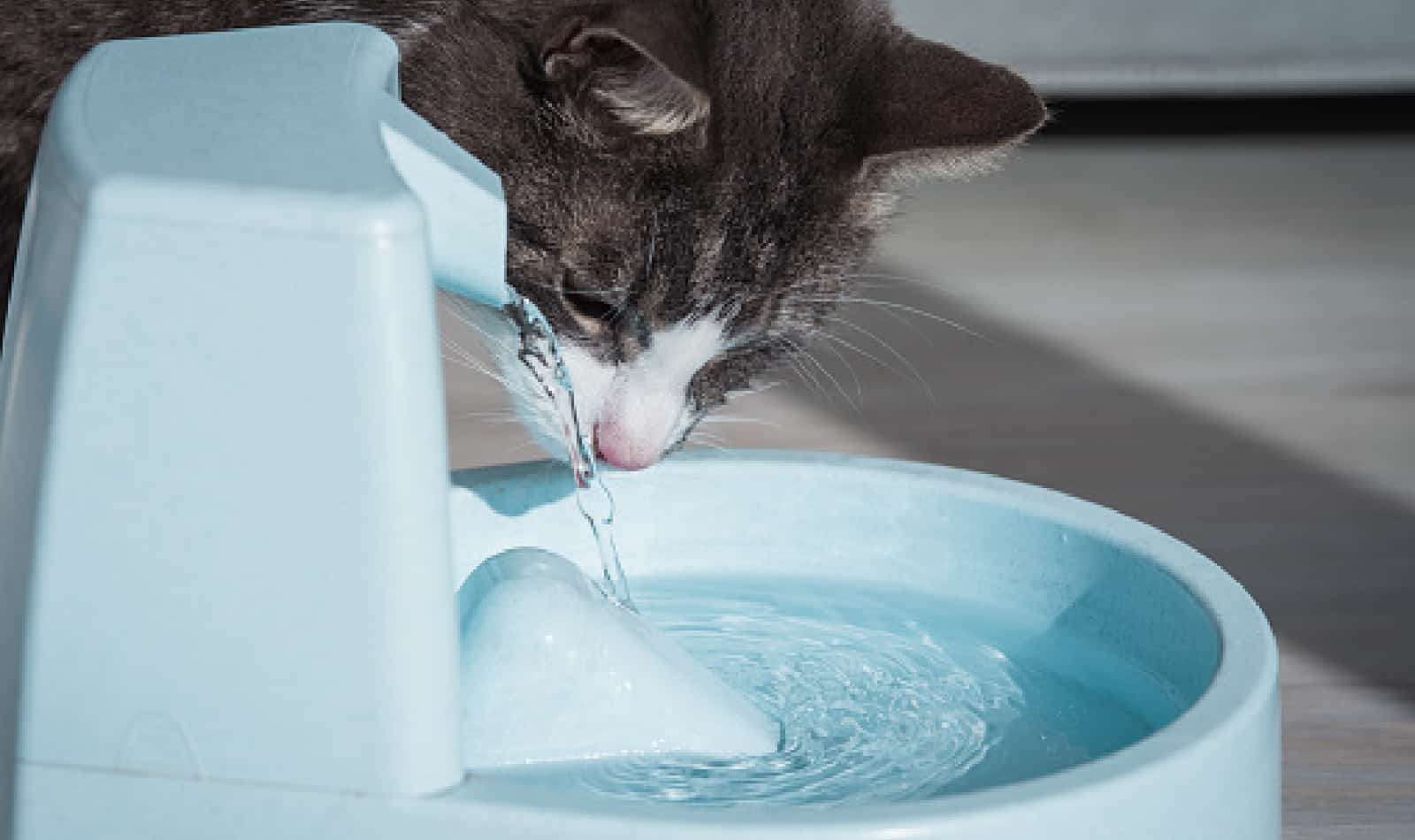Cats are known for their finicky nature when it comes to food and water. Providing a clean and fresh water source is essential for their well-being. Many cat owners opt for cat fountains to encourage their furry friends to stay hydrated. However, maintaining these fountains is crucial. In this article, we’ll delve into the topic of how often you should change the water in a cat’s fountain and why it matters.
The importance of clean water for cats
Before we dive into the specifics of changing a water fountain for cats, let’s understand why water fountain is so important. Cats, like all animals, need access to clean water to stay healthy. Proper hydration is vital for their kidney function, digestion, and overall well-being. Inadequate water intake can lead to urinary tract issues and other health problems.
Setting up a cat’s water fountain
Before discussing the water change frequency, it’s essential to set up your cat’s water fountain correctly. Ensure it’s placed in a quiet, accessible location where your cat feels comfortable drinking. Cats are sensitive to their surroundings, and a serene spot will encourage them to use the fountain regularly.
Factors affecting water change frequency
The frequency of changing water in your cat’s fountain can vary based on several factors:
Size of the fountain
The size of the fountain reservoir plays a significant role. Smaller fountains will require more frequent water changes compared to larger ones. This is because the water volume in a small fountain gets depleted more quickly, and smaller fountains tend to accumulate impurities faster.
Number of cats
If you have multiple cats sharing the same fountain, you’ll likely need to change the water more often. Cats can introduce dirt and debris when drinking, leading to quicker water contamination. Additionally, if your cats are particularly active drinkers, the water level can drop rapidly.
Water quality
The quality of the water you use also matters. If your tap water has a high mineral content or contains impurities, you may need to change the water more frequently. Water with a strong taste or odor can deter cats from drinking, so using filtered or bottled water might be necessary in such cases.
General guidelines for water change
To keep your cat’s water fountain clean and your feline friend hydrated, follow these general guidelines:
Daily checks
Make it a habit to check the water level in the fountain daily. Top it up as needed to ensure your cat always has access to fresh water. Cats are more likely to drink from a fountain that has a sufficient water supply.
Weekly maintenance
Perform a thorough cleaning of the fountain at least once a week. This prevents the buildup of grime and ensures the water remains clean and appealing to your cat. Weekly maintenance is crucial for maintaining water quality and preventing the growth of harmful bacteria.
Signs your cat’s fountain water needs changing
Knowing when to change the water in your cat’s fountain is crucial. Look out for these signs:
Odor
If the water develops a foul odor, it’s time for a change. Cats are sensitive to smell, and they’ll be less likely to drink from a fountain with unpleasant odors. The odor can be caused by bacteria or impurities in the water, and addressing it promptly is essential.
Algae growth
Algae can thrive in water that’s left stagnant for too long. If you notice green or slimy growth, clean the fountain and replace the water immediately. Algae not only affects water quality but can also be harmful if ingested by your cat.
Sediment buildup
Over time, minerals and debris can accumulate in the fountain’s reservoir. When you see sediment at the bottom, it’s a clear indication that the water needs changing. Sediment buildup can lead to clogs and affect the fountain’s performance, so regular maintenance is vital.
Tips for keeping the water fresh
Maintaining fresh water in your cat’s fountain involves more than just changing it regularly. Consider the following tips:
Filter replacement
If your cat fountain has a filter, follow the manufacturer’s recommendations for replacement. A clean filter helps keep the water clear and free from impurities. Filters are designed to trap particles and chemicals, enhancing the water quality your cat consumes.
Location matters
Avoid placing the fountain near the litter box or food bowls. Cats prefer their water source to be away from these areas to reduce the risk of contamination. A separate location also provides your cat with a more peaceful drinking environment.
Regular rinsing
Between full cleanings, rinse the fountain’s components every few days to prevent the buildup of grime. This quick rinse helps maintain water quality and reduces the frequency of deep cleanings. A few moments spent rinsing can go a long way in keeping your cat’s water fresh.
Hydration and cat health
Proper hydration is essential for your cat’s health. By maintaining a clean water source, you ensure your feline companion stays hydrated, reducing the risk of urinary tract issues and promoting overall well-being. Cats often have a low thirst drive, so providing clean water in an appealing manner, such as through a fountain, encourages them to drink more.
Common mistakes to avoid
To wrap things up, let’s highlight some common mistakes to avoid:
Neglecting regular cleaning and water changes: Consistency in maintaining your cat’s fountain is crucial for their health. Using harsh chemicals for cleaning, which can harm your cat: Stick to mild, pet-safe cleaning products. Placing the fountain in a noisy or intimidating location: Create a peaceful drinking environment to encourage your cat to stay hydrated.
In conclusion, the frequency of changing the water in your cat’s fountain depends on various factors, including the fountain’s size, the number of cats, and water quality. Regular cleaning, daily checks, and keen observation of your cat’s behavior are key to providing a fresh and appealing water source. Remember, a well-maintained cat fountain is a happy cat fountain!
FAQs
1. Can I use tap water in my cat’s fountain?
Yes, tap water is generally safe for your cat’s fountain, but be mindful of the water quality in your area. If it has a strong odor or unusual taste, consider using filtered water.
2. How often should I replace the filter in my cat’s fountain?
Check the manufacturer’s recommendations, but a common guideline is to replace the filter every 2-4 weeks, depending on usage and water quality. A clean filter ensures your cat drinks pure, filtered water.
3. My cat refuses to drink from the fountain. What should I do?
Try changing the fountain’s location and ensure it’s clean. Some cats have preferences for still water, so you may need to provide a separate bowl of water as well. Cats can be particular, so experimenting with different options may be necessary.
4. Is it okay to use dish soap for cleaning the fountain?
Yes, mild dish soap is safe for cleaning. Just make sure to rinse thoroughly to remove any residue. It’s important to use pet-safe soap to avoid any potential harm to your cat.
5. How can I prevent algae growth in my cat’s fountain?
Regular cleaning and water changes are the best ways to prevent algae growth. You can also place the fountain away from direct sunlight, as light promotes algae growth. A clean fountain not only looks better but also ensures your cat has access to clean, fresh water.






